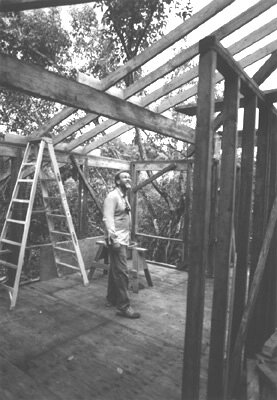welcome to very simple sustainability
Our practices began in Cambridge, Berkeley and Auckland. We have designed, built and lived in sustainable dwellings, ecovillages and agricultural collectives since the 80s, with vernacular architecture and eco design having a huge influence on our work.
“We’re just three old guys,” one of us laments. True, maybe, but this work has endured and our grown children, who are not old or guys, are using the same principles in their own practice. Sustainable architecture must more than today’s carbon neutral projects—it is the production of space and reduction of surplus via artistic, effective, and low cost and low or zero energy use architecture. An unpopular view in light of today’s consumerism and creative carbon accounting, perhaps.
For architecture to be sustained, and retained, from the past, it must have value (perhaps beauty too), which distinguishes it from building. The Parthenon is one of the finest examples (see also: Vitruvian temple ‘Maison Carrée’ in Nîmes). Vitruvius believed that buildings must be durable, usable and beautiful. Alberti reimagined Vitruvius with a similar three attributes that humans need: necessitas (necessity), commoditas (comfort) and voluptas (aesthetic pleasure). These attributes align quite completely with sustainable architecture.
We’ve tried to similarly extract some basic and enduring principles, or the practice and process, of sustainable architecture—what we think of as very simple sustainability. These are open source tools because this work is critical, and because we hope people will use these tools in tandem with technology that can more accurately apply sustainability norms and architectural forms to specific environments and constraints.
We would love to hear your thoughts and about your work. We’ll also continue to share insights into sustainable architecture, and new tools—and, since this is a group effort, it’s worth mentioning that not all content we share will represent the views of all contributors.
Portrait of VSS contributor Robert Hotten building a house in the Kauai eco community
Pole house model, part of the Kauai eco community plan
Kauai eco community house
Naturally camouflaged private residential project
Portrait of VSS contributor Peter Diprose in country estate gardens
Example of vernacular architecture with the circulade (a traditional village that has been built in concentric circles) of Souvignargues, France, c. 1500
Proposed hillside town with integrated vineyards and a circulade-like upper end: a remix of southern France by VSS contributor Peter Diprose with PDA Architects and Landscape (2018)






